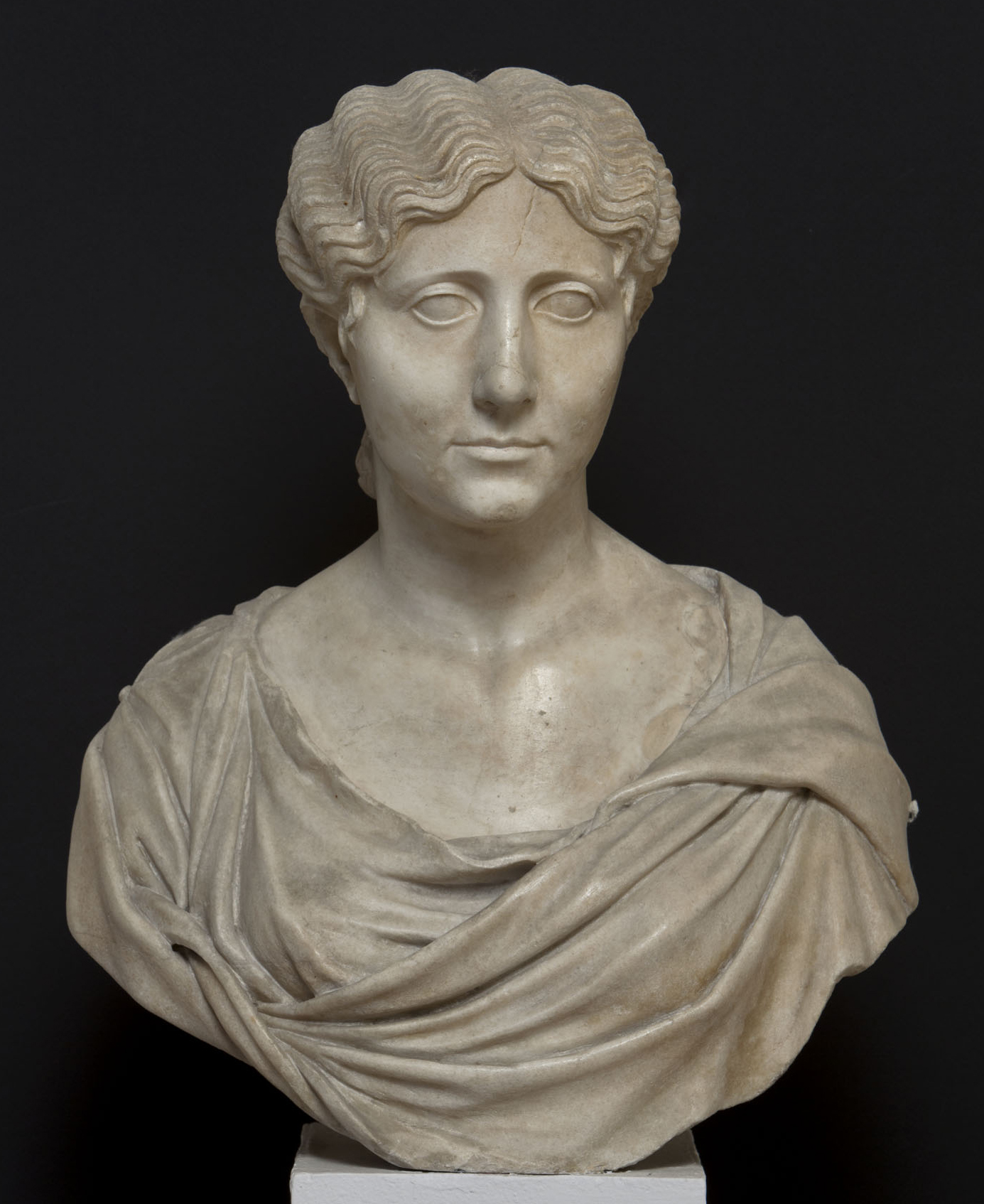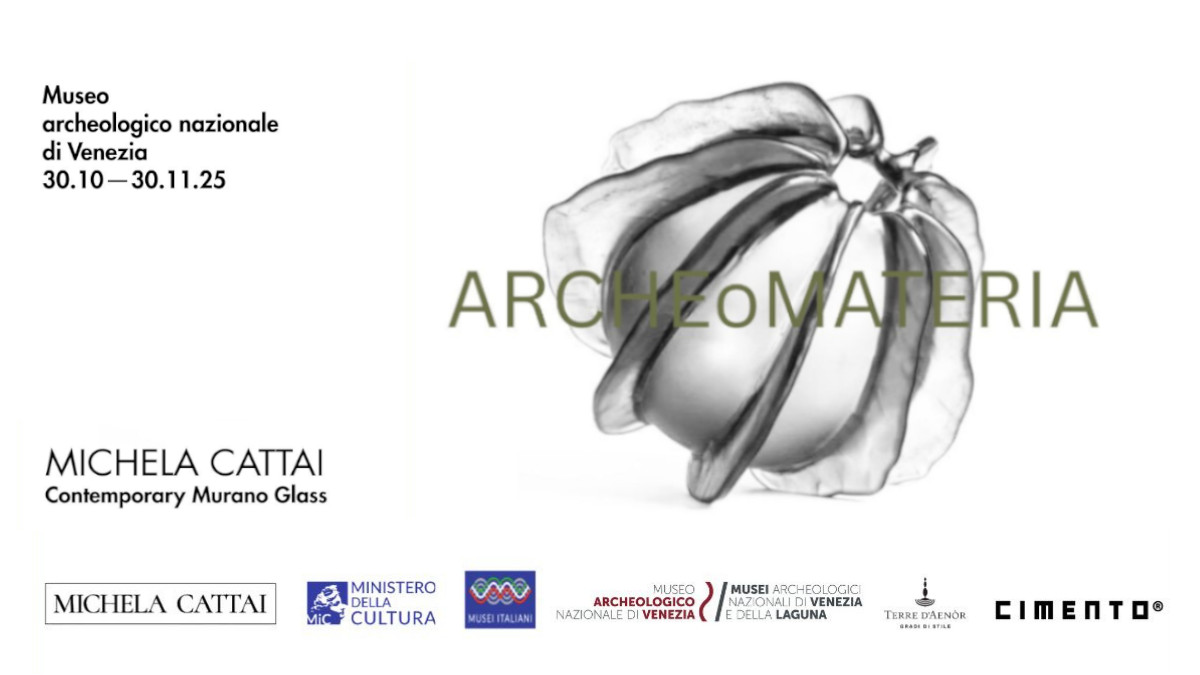
Dominae and fashion: Antonia Minor behind the scene of power
Within the Julio-Claudian dynasty, women often had the opportunity to shine and show off their political skills. However, there have been cases in which these, despite their prestige and influence, remained in the shadows: an example is that of Antonia Minor. Antonia was born in Rome in 36 BC from Mark Antony and Octavia, she was the sister of Octavian and grew up at the court of the man who, after defeating her father at the end of the civil wars, would become Augustus, in a cultural environment in which the Hellenistic matrix now had a certain weight.

Bust of Antonia Minor in profile. Room IX of the National Archaeological Museum of Venice.
In 18 BC she married Drusus Major, son of Livia, with whom she had Germanicus, Livilla and Claudius. Although already in 9 BC Antonia was left a widow due to the premature death of Drusus in Germany, she managed to free herself from Augustus’ marriage policies and not remarry, although sources such as Plutarch praise her beauty. In this way, she became a model of family virtue precisely because of her univira condition, which however did not exclude her from having an important role in the imperial family. In fact, she was entrusted with the task of helping Livia to take care of the education of the younger members of the dynasty, only apparently causing her to remain in the shadow of the emperor’s wife. It’s not a coincidence that Antonia’s openness towards the oriental world influenced the growth of both her own children and the other young people at court, as well as being politically useful in strengthening relations with the elites and the client kings and princes who came from there.
After the death of Augustus and the accession of Tiberius, Antonia demonstrated great loyalty to the new princeps, so much so that she took apparently controversial positions with respect to her own children: the case of the death of Germanicus in 19 AD is striking, since the matron seems to have joined to the line adopted by Tiberius and Livia by not showing themselves in public, perhaps to dilute suspicions about the emperor. However, the Tabula Siarensis would argue that, on the contrary, Antonia had been officially involved by the Senate to decide on the funeral honors to be reserved for her son.
In the following years, in addition to carrying out the educational tasks of the deceased Livia, she once again demonstrated her loyalty to the emperor by not siding with any of the factions that maneuvered for the succession to the imperial throne, so much so that, according to some sources, she even had a active role in foiling the conspiracy of the praetorian prefect Sejanus. For Cassius Dio, the attitude adopted towards his daughter, who joined Sejanus, would be linked to this story. Antonia herself, in fact, and not Tiberius, would have caused Livilla’s death, so as to preserve the balance of the dynasty and the institutions. In the meantime, the matron had also distinguished herself for the wealth she had at her disposal, being able to count on a large number of properties, as well as valuable slaves and freedmen in her service, freedmen who would later be very useful to her son Claudio during his principality. For example, together with his sister Antonia the Elder, he contributed with a donation to the decoration of the forum of Augustus, participating in his ideological program.

Detail of Antonia Minor’s hairstyle and the holes on the back.
Antonia died in 37 AD, probably from natural causes as reported by the Fasti Ostienses, just a month after the death of Tiberius. Although Suetonius and Cassius Dio attribute responsibility for the death to Caligula, this would seem unlikely given the honors that the new princeps reserved for her, including the title of Augusta, however rejected by the matron.

Detail of Antonia Minor’s hairstyle on the right side of the face.
Antonia Minor’s austere personality clearly shines through in her monetary profiles and marble portraits, such as the bust exhibited in Room IX of the Archaeological Museum. It is characterized by gentle features but, at the same time, expressive of its dignity. The figure appears almost idealized but still characterized by a certain naturalism due to the way the large eyes and the precisely cut mouth emerge, flanked on the sides by small wrinkles. It is a portrait made at a no longer young age and one could even assume it is posthumous, given the attempt to idealize the image of a mature woman and the presence of holes that could have supported a cultic veil for deification.
One hypothesis would associate it with an identification with the supposed divine ancestor Venus, a theory deduced both from the features of praxitelic memory and from the ample neckline, perhaps derived from an original nude statue.
Her hairstyle plays an important role, as an expression of the continuity between the severity of the Augustan and Tiberian ages. The hairstyle is in fact simple and tidy, with the hair that, from the central parting, branches out to the sides in wavy locks, leaving the ears uncovered. The two bands of hair are then gathered at the nape of the neck in a tail of braids folded at the back, very similar to the one seen in the portrait of Agrippina the Elder. The spiral curls that descend along the temples and behind the ears are peculiar to the later portraits of Antonia Minor, while two variations of the hairstyle, in some portraits of an advanced age, consist of the presence of a band in the hair and a low chignon instead of the tail of braids. Previous examples of this way of arranging hair can be recognized in terracottas from the end of the Republican period: on the other hand, it was so widespread that it was also remembered in Ovid’s Ars Amatoria. This hairstyle remained in vogue at least until the age of Claudius, when the needs for aesthetic renewal and the abandonment of excessive austerity led to the addition of curls at ear height and looser locks along the neck: a change that had already begun in the past by Agrippina the Elder and more in line with the tastes of the period.
Michele Gatto
Patricia Caprino
Bibliography
Buccino L. 2011, “Morbidi capelli e acconciature sempre diverse”. Linee evolutive delle pettinature femminili nei ritratti scultorei dal secondo triumvirato all’età costantiniana, in E. La Rocca, C. Parisi Presicce, A. Lo Monaco (eds.), Ritratti. Le tante facce del potere (exhibition catalogue, Roma, Musei Capitolini, 10 marzo – 25 settembre 2011), Roma 2011, pp. 360-383.
Cenerini F. 2014, Dive e donne. Mogli, madri, figlie e sorelle degli imperatori romani da Augusto a Commodo, Imola.
Martina G. 2016, L’interventismo familiare di Antonia Minore: il caso della morte di Germanico e Livilla, in F. Cenerini, F. Rohr Vio (eds.), Matronae in domo et in re publica agentes – spazi e occasioni dell’azione femminile nel mondo romano tra tarda repubblica e primo impero, Trieste, pp. 287-304.
Segenni S. 1995, Antonia Minore e la domus Augusta, in “Studi Classici e Orientali” 44, pp. 297-331.
Taiuti A. 2017, Un ritratto inedito di Antonia Minore, in “Archeologia Classica” 68, pp. 551-648.
Traversari G. (eds.) 1968, Museo Archeologico di Venezia: i ritratti, Roma.




